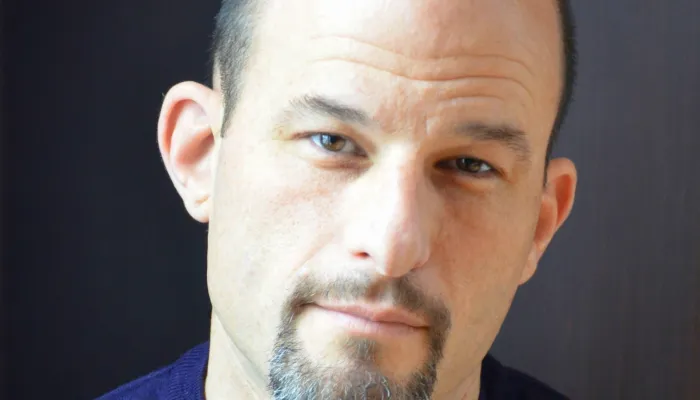In the empty classroom, at sunrise, a girl
sits on the floor, staring at a glockenspiel.
She’s shredding the cuticles on her left hand
instead of starting to practise.
She doesn’t want to play —
not yet, if ever. The irritating sound
of her teeth clicking is the only sound
in the band room. The cranky girl
has been dropped off early so she can play
a bit alone on the glockenspiel
before her classmates come to practise,
instrument cases clutched in their chapped hands
like luggage. They have such sure hands,
she thinks, and she can hear the sounds
they make, the laughter in the practise
rooms that make her feel like a little girl.
She is a “late bloomer,” and like the glockenspiel,
she is awkward at the games they play.
Only it isn’t really play,
is it? It’s life. The boys put their hands
on the girls, who vibrate like glockenspiels,
with tinkling notes that sound
shrill and artificial to the girl.
But isn’t this how it’s always been practised?
And wouldn’t she appreciate it more if she practised?
The ones who are good at it think of it as play.
That’s what they think it means to be a girl.
But that’s not me. I have ugly hands.
I don’t know how to make the giggly sounds
they expect from me, except on the glockenspiel.
And what’s the point of a glockenspiel
if I can’t even concentrate and practise?
For some it’s music, for others only sounds.
Now here come my bandmates, ready to play,
and all I’ve done is chew my hands
into bleeding mallets. I’m more stick than girl.
Practice begins, and it’s time for the girl
to hoist her glockenspiel and exercise her hands.
Her imperfect self is on display. How does she sound?
A silent glockenspiel plays out a teenage girl’s anxieties about growing up and fitting in.
1. Why is the girl in an empty classroom early in the morning? Literally, what is she doing?
2. What similes and metaphors are used in the poem? How do they help you understand what sort of person the girl is?
3. The poem uses a fair amount of enjambment, most notably in stanzas one and two. How does this poetic device affect the rhythm of lines? How might it support the poem’s theme?
4. What do we know about the girl’s peers/classmates? How might the repeated images of “practise” and “playing” reflect the struggles of self-discovery, self-esteem, growing up, and/or fitting in?
5. This poem is mostly written in the third person (“she” and “her”), but then shifts to the first person (“I” and “me”) in the middle of stanza five. Does this shift in perspective change your impression of the girl? What emotional effect does it create?
6. Adam Sol wrote his poem as a sestina, saying that he liked using this complex poetic structure because “the repeated words force us to examine and re-examine a subject […] like turning a crystal geode around and around.” If you were to recite this poem, how might you emphasize the repeated words in different ways to draw out different aspects of theme, character, and voice?
7. Write a poem describing any important aspect of your own identity — are you an athlete? An artist? A writer? A musician/singer? A book lover? A pet owner? A video game player? To create tension in your poem, try structuring it in a way that compares 1) how you see yourself, and 2) how another person (e.g. a parent, sibling, teacher, friend) sees you or expects you to be. Try writing your poem as a sestina!
Useful Links
A glockenspiel is both a percussive and a melodic instrument. Listen to the glockenspiel solo from Mozart’s The Magic Flute here:
https://www.youtube.com/watch?v=hd4-Cam5vzU
An interview with Adam Sol:
http://thetorontoquarterly.blogspot.com/2014/05/adam-sol-complicity-interview.html
“Op. 75, Sestina in B-flat for the Glockenspiel” from Complicity by Adam Sol. Copyright © 2014 Adam Sol. Reprinted by permission of McClelland & Stewart, a division of Penguin Random House Canada Limited.





